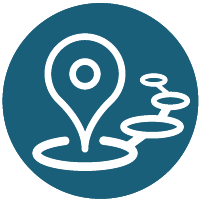Level Up Learning: Enhancing Education and Assessment Through Gamification
,
HBGCC - Posters, Table 2
Session description
Outline
1. Introduction (10 minutes)
Content: Overview of gamification and its impact on student engagement and learning.
Engagement:
Icebreaker Activity: Participants will share their favorite childhood games and how those games fostered engagement and learning.
Process: Use a polling tool (like Mentimeter) to collect responses, encouraging interaction and setting a positive tone.
2. Understanding Gamification (15 minutes)
Content:
Definition and key principles of gamification.
Overview of current research supporting gamification strategies in education (aligning with ISTE Standard 1c).
Engagement:
Group Discussion: Participants will discuss their understanding of gamification and any prior experiences.
Process: Use breakout groups to facilitate discussions, then share insights with the larger group.
3. Gamification Tools and Techniques (20 minutes)
Content:
Presentation of various gamification tools and platforms (e.g., Kahoot, Quizizz, Classcraft).
Explanation of how to collect and analyze assessment data using these tools (aligning with ISTE Standard 7c).
Engagement:
Demonstration: Live demonstration of one or two tools, showing their features and functionalities.
Process: Participants will use their devices to follow along and explore the tools in real-time.
4. Hands-On Activity: Designing Educational Games (25 minutes)
Content: Participants will work in small groups to create their own gamified learning activity.
Engagement:
Collaborative Workshop: Each group will brainstorm ideas, select a learning objective, and design a simple game or activity.
Process:
Provide a template for designing a game.
Encourage peer-to-peer interaction as groups discuss and refine their ideas.
Circulate among groups to offer guidance and support.
5. Innovative Assessment Techniques (10 minutes)
Content: Overview of assessment techniques using game mechanics to track student progress and provide feedback.
Engagement:
Interactive Quiz: Use a gamified quiz to reinforce learning about assessment strategies.
Process: Participants will use their devices to answer quiz questions, reinforcing the content through immediate feedback.
6. Reflection and Q&A (10 minutes)
Content: Summary of key takeaways and next steps for implementing gamification.
Engagement:
Reflection Activity: Participants will jot down one new idea they plan to implement and share it with a partner.
Process: Open the floor for questions and encourage participants to share their reflections with the group.
7. Closing (5 minutes)
Content: Final thoughts and resources for further learning.
Engagement:
Resource Sharing: Distribute a digital handout with links to tools, articles, and research on gamification.
Process: Use a closing poll to gauge participant satisfaction and gather feedback on the session.
Supporting research
Articles
"Gamification in Education: What, How, Why Bother?" by Lee Sheldon
"The Benefits of Gamification in Education" by Adam A. L. Pritchard
"Game-Based Learning: The Future of Education?" by Jane McGonigal
Presenters

Session specifications
Topic:
Grade level:
Audience:
Attendee devices:
Attendee device specification:
Subject area:
ISTE Standards:
Learner
- Stay current with research that supports improved student learning outcomes, including findings from the learning sciences.
- Use assessment data to guide progress, personalize learning, and communicate feedback to education stakeholders in support of students reaching their learning goals.
| Related exhibitors: | Quizizz Inc., Prodigy Education, Kahoot! EDU, Inc. |

 Back
Back Trips and Tours
Trips and Tours